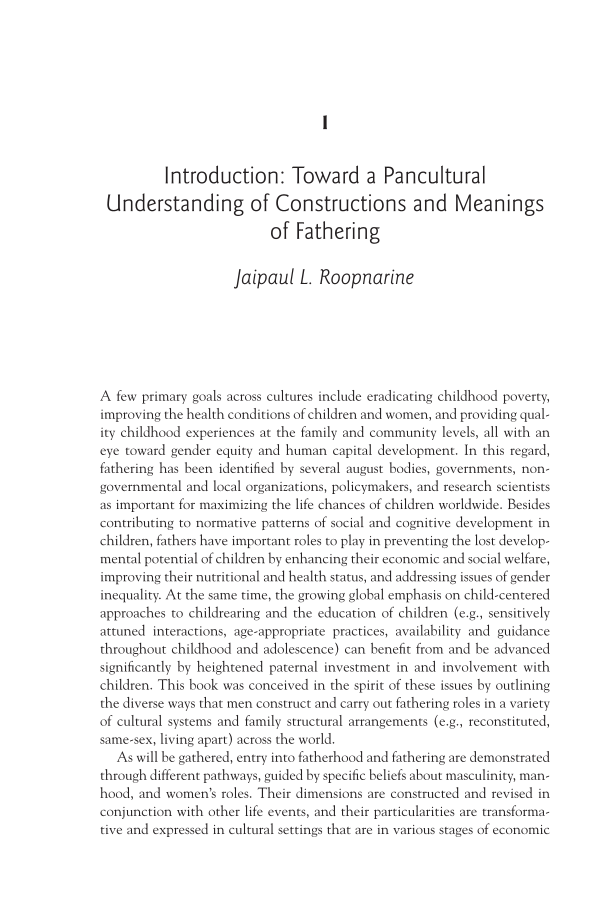1 Introduction: Toward a Pancultural Understanding of Constructions and Meanings of Fathering Jaipaul L. Roopnarine A few primary goals across cultures include eradicating childhood poverty, improving the health conditions of children and women, and providing qual- ity childhood experiences at the family and community levels, all with an eye toward gender equity and human capital development. In this regard, fathering has been identified by several august bodies, governments, non- governmental and local organizations, policymakers, and research scientists as important for maximizing the life chances of children worldwide. Besides contributing to normative patterns of social and cognitive development in children, fathers have important roles to play in preventing the lost develop- mental potential of children by enhancing their economic and social welfare, improving their nutritional and health status, and addressing issues of gender inequality. At the same time, the growing global emphasis on child-centered approaches to childrearing and the education of children (e.g., sensitively attuned interactions, age-appropriate practices, availability and guidance throughout childhood and adolescence) can benefit from and be advanced significantly by heightened paternal investment in and involvement with children. This book was conceived in the spirit of these issues by outlining the diverse ways that men construct and carry out fathering roles in a variety of cultural systems and family structural arrangements (e.g., reconstituted, same-sex, living apart) across the world. As will be gathered, entry into fatherhood and fathering are demonstrated through different pathways, guided by specific beliefs about masculinity, man- hood, and women’s roles. Their dimensions are constructed and revised in conjunction with other life events, and their particularities are transforma- tive and expressed in cultural settings that are in various stages of economic
Document Details My Account Print multiple pages
Print
You have printed 0 times in the last 24 hours.
Your print count will reset on at .
You may print 0 more time(s) before then.
You may print a maximum of 0 pages at a time.


















































































































































































































































































































































































































































































